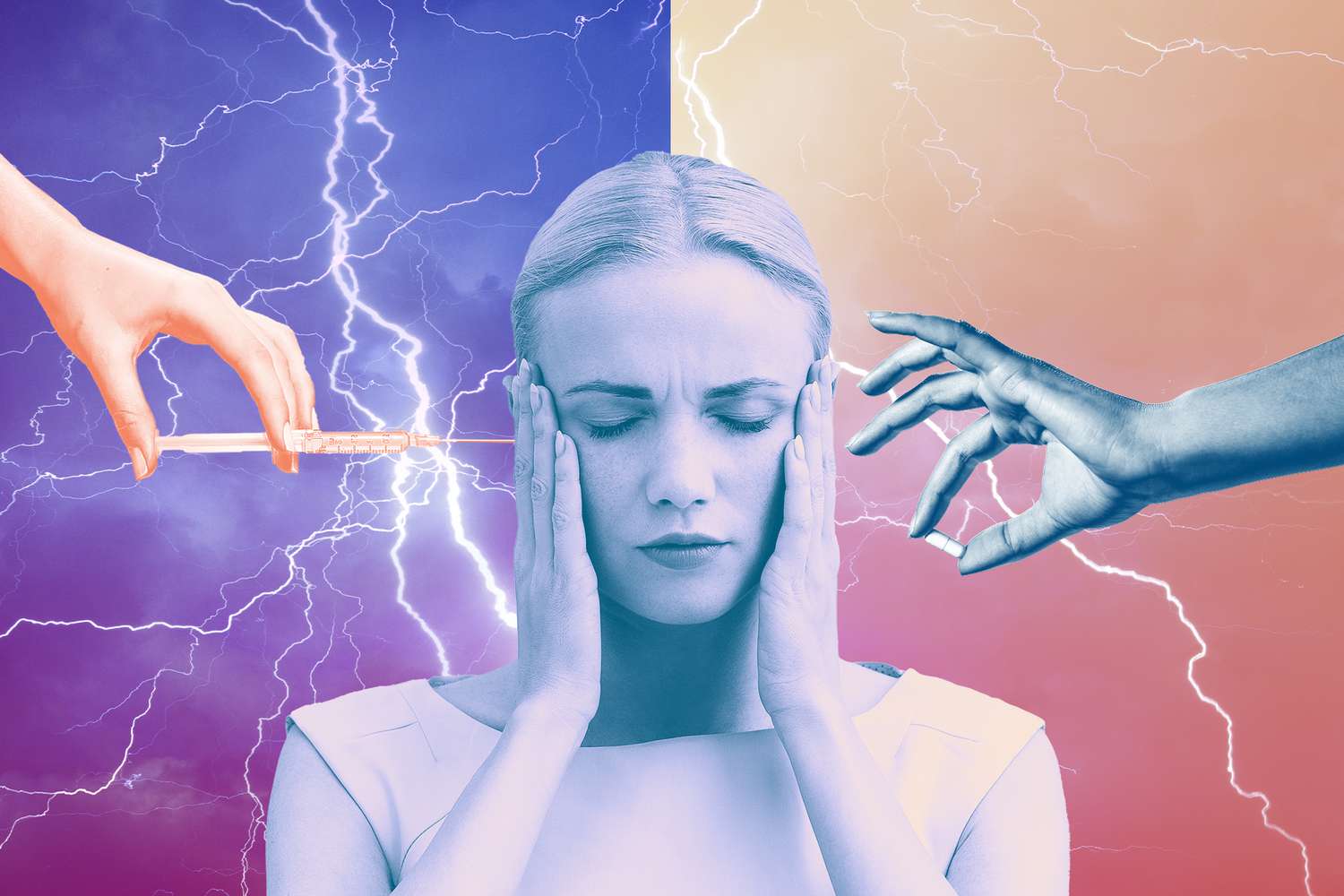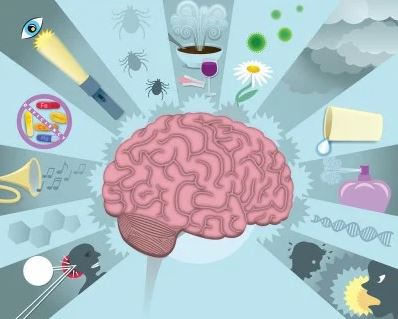Basilar migraine, or basilar artery migraines, are a rare but severe form of migraine headache. For a long time, they were thought to be caused by changes in blood vessels and blood flow at the base of the brain in the brainstem, leading to intense and debilitating headaches with neurologic symptoms. However, we now know that these symptoms are related to transient electrical changes in the brainstem. Thus, the updated term for these attacks is now migraine with brainstem aura, while basilar migraine and basilar artery migraine are now considered outdated terms.
These migraines can last for hours or even days and may be accompanied by symptoms such as vertigo, dizziness, vision disturbances, double vision, tinnitus, or decreased hearing, confusion, decreased level of consciousness, and nausea. However, according to ICHD3 diagnostic criteria, there can not be weakness nor retinal symptoms associated with the attack.
It is essential to recognize the symptoms of basilar migraines so that prompt and appropriate treatment can be administered. The classic symptom of a basilar migraine is an intense migraine headache usually accompanied by vertigo, dizziness, and nausea. Other symptoms may include double vision, temporary loss of vision in one eye, tingling or numbness in the hands or feet, confusion or disorientation, slurred speech, and hearing problems.
What is Basilar Migraine?
Basilar migraines are a rare but serious form of migraine headache. These headaches were previously believed to be caused by changes in the blood vessels at the base of the brain in the brainstem, leading to intense and sometimes debilitating pain. Basilar migraines can be accompanied by symptoms such as vertigo, dizziness, vision disturbances, confusion, and nausea.
Cause of Basilar Migraine
The exact causes of basilar migraines remain unclear, although researchers believe they may be related to changes in the blood vessels in the brain (as are all migraines), as well as transient electrical changes in the brainstem specifically. This is why the terminology has evolved from basilar migraine to migraine with brainstem aura. This type of migraine is believed to be triggered by various factors, such as stress or lack of sleep, as well as by certain medications, alcohol consumption, hormone fluctuations in women, and any of the standard migraine triggers.
Diagnosis of Basilar Migraine
Basilar migraines are usually diagnosed after ruling out other potential causes of the symptoms such as brainstem stroke or TIA (transient ischemic attack). Diagnosis is based on an extensive medical history, a physical examination, and tests such as an MRI or CT scan to check for structural abnormalities in the brain. These tests are also done to ensure that there is no narrowing or blockage in the basilar artery (artery that runs along the base of the brainstem), or the vertebral arteries. The doctor may also conduct blood tests to look for signs of infection, inflammation, or any other medical condition causing the headache.
Once a diagnosis of basilar migraines has been made, treatment will vary depending on the severity and frequency of symptoms. Over-the-counter or prescription medications may be prescribed to reduce pain and other migraine symptoms, as well as lifestyle changes such as maintaining a regular sleep schedule, cutting back on caffeine and alcohol consumption, and reducing stress. If the migraine symptoms persist, more intense treatments such as Botox injections or nerve block procedures may be recommended to reduce the frequency of attacks.
Signs and Symptoms of Basilar Migraine
Basilar migraines are characterized by intense and sometimes severe migraine headaches that typically begin following a variety of possible neurologic symptoms.
The symptoms include:
- Vertigo: A sensation of spinning or swaying
- Dizziness: Lightheadedness and a feeling of instability
- Vision disturbances: Temporary loss of vision in one eye, double vision, or blurred vision
- Nausea and vomiting
- Tingling or numbness in the hands or feet
- Confusion and disorientation
- Decreased level of consciousness
- Slurred speech (dysarthria)
- Ataxia (unsteadiness while walking)
- Hearing problems (tinnitus or decreased hearing)
A typical basilar migraine attack begins with an aura that may include one or more of the above mentioned symptoms. This is followed by a headache phase, which can be severe and last from several hours to days.
After the headache phase, patients may experience a postdrome, or “migraine hangover”, with lingering symptoms such as tiredness and confusion.
Triggers of Basilar Migraine
Basilar migraines are believed to be triggered by a variety of factors, such as stress, lack of sleep, certain medications, alcohol consumption, and hormone fluctuations in women. Researchers believe these triggers cause changes in the blood vessels and electrical system at the brain’s base in the brainstem, leading to the intense headaches associated with basilar migraines.
It is important to note that these symptoms may vary from person to person, and not all people who experience basilar migraines will experience the same symptoms.
If you think you might be experiencing a basilar migraine, it is vital to seek medical attention as soon as possible. A doctor can help rule out other potential causes of the symptoms and provide a diagnosis and treatment plan tailored to your needs.
Without proper treatment, basilar migraines can be debilitating and difficult to manage.
Treatment and Management of Basilar Migraines
Treatment for basilar migraines usually involves medications to reduce pain and lifestyle changes to reduce the frequency and severity of attacks. Over-the-counter or prescription medications such as gepants, or nonsteroidal anti-inflammatory drugs (NSAIDs) may be prescribed. Historically, triptans and ergotamine derivatives such as DHE have generally been considered a contraindication in these patients. However, this contraindication is based in the older vascular theory of migraine where it was belived that aura symptoms were due to lack of blood flow. We now know that these symptoms are electrically based, so the contraindication to these medicines for basilar migraine (and hemiplegic migraine) needs to be revisited. More intensive treatments, such as Botox injections or nerve blocks, may be recommended if these treatments are ineffective.
Importance of Self-Care When Diagnosed With Basilar Migraine
Finally, it is crucial to practice good self-care to manage the symptoms of basilar migraines. This may include getting enough sleep, regular physical activity, relaxation techniques such as yoga or meditation, maintaining a healthy diet, and avoiding stress. Practicing these self-care techniques can help reduce the frequency and severity of basilar migraines and improve the overall quality of life.
Therapies to Reduce the Frequency of Basilar Migraine
Acupuncture, biofeedback and massage therapy can help reduce the number of basilar migraines you get. Acupuncture uses tiny needles which are put in specific places on your body. Biofeedback helps you learn to control your body’s response to pain. Massage therapy involves using your hands to rub and press on different body parts. All three treatments can help relax your muscles, reduce stress and make managing the headaches caused by basilar migraines easier.
Risks and Complications related to Basilar Migraines
Basilar migraines can mimic more severe disorders, including stroke, seizures, and vision problems. A stroke is a potentially life-threatening complication caused by the narrowing or blockage of an artery leading to the brain. Symptoms of stroke include sudden numbness or weakness in the face, arms, or legs; confusion; difficulty speaking or understanding; difficulty seeing from one or both eyes; and difficulty walking.
Seizures can also occur as a complication of basilar migraines, although this is very rare. These seizures typically appear suddenly and last a few seconds to several minutes and may cause confusion, impaired consciousness, loss of bowel or bladder control, twitching or jerking movements, or even loss of consciousness.
Finally, basilar migraines can cause vision problems such as blurring, double vision, or temporary loss of sight in one eye. These symptoms typically clear up after the migraine attack has ended, but if they persist more than 60 minutes, it is vital to seek medical attention as soon as possible. With that said, these types of symptoms always warrant urgent medical evaluation, especially the first time they occur.
The best way to manage risks associated with basilar migraines is to identify and avoid potential triggers. Common triggers may include stress, lack of sleep, certain medications or food additives, alcohol consumption, and hormone fluctuations in women. Recognizing and avoiding these triggers can significantly reduce the frequency and severity of your basilar migraines. If they are frequent enough, than a preventive treatment is recommended.
Seek Medical Attention
It is essential to seek medical attention for basilar migraines if you experience any of the following symptoms: frequent, severe headaches; any vision problems such as blurring or double vision; confusion; difficulty speaking or understanding; weakness in the face, arms, or legs; loss of bowel or bladder control; twitching or jerking movements; or loss of consciousness. With the proper treatment, basilar migraines can be managed and their associated risks minimized.
For more information on basilar migraines, talk to your doctor or visit a headache specialist who can provide advice and treatment options tailored to your individual needs. If you think you may have basilar migraines, it is essential to seek medical advice as soon as possible. With the proper treatment and lifestyle changes, you can reduce the frequency and severity of attacks and improve your quality of life.
Can basilar migraines cause permanent damage?
Basilar migraines do not cause permanent damage. However, if left improperly evaluated, untreated or unmanaged, these migraines can lead to stroke and other serious complications such as seizures, vision problems, and permanent disability, if there is a more concerning underlying cause present other than purely migraine. To reduce the risk of serious complications associated with basilar migraines, it is vital to seek medical attention as soon as possible and manage the condition with appropriate treatment and lifestyle adjustments.
Summing It All Up
Basilar migraines can cause severe symptoms such as confusion, double vision, and other neurological symptoms, although they do not cause weakness. To reduce the risk of serious complications associated with basilar migraines, it is vital to identify and avoid potential triggers, seek medical attention as soon as possible, and manage the condition with appropriate treatment and lifestyle adjustments. With the right management plan, basilar migraines can be managed effectively to reduce the frequency and severity of attacks.
The importance of seeking medical attention for basilar migraines is to evaluate and exclude more serious causes, such as stroke and other serious conditions. The frequency and severity of attacks can be managed by getting treatment and making lifestyle adjustments. Early diagnosis and treatment can help prevent attack associated disability from leaving these migraines untreated or unmanaged. If you suffer from basilar migraines, talk to your healthcare provider or seek support and treatment from a headache specialist. With the right management plan, you can reduce the frequency and severity of attacks and improve your quality of life.
IF YOU HAVE HEADACHE, MIGRAINE, OR FACIAL PAIN AND ARE LOOKING FOR ANSWERS ON ANYTHING RELATED TO IT, A HEADACHE SPECIALIST IS HERE TO HELP, FOR FREE!
FIRST, LET’S DECIDE WHERE TO START:
IF YOU HAVE AN EXISTING HEADACHE, MIGRAINE, OR FACIAL PAIN DIAGNOSIS AND ARE LOOKING FOR THE LATEST INFORMATION, HOT TOPICS, AND TREATMENT TIPS, VISIT OUR FREE BLOG OF HOT TOPICS AND HEADACHE TIPS HERE. THIS IS WHERE I WRITE AND CONDENSE A BROAD VARIETY OF COMMON AND COMPLEX MIGRAINE AND HEADACHE RELATED TOPICS INTO THE IMPORTANT FACTS AND HIGHLIGHTS YOU NEED TO KNOW, ALONG WITH PROVIDING FIRST HAND CLINICAL EXPERIENCE FROM THE PERSPECTIVE OF A HEADACHE SPECIALIST.
IF YOU DON’T HAVE AN EXISTING HEADACHE, MIGRAINE, OR FACIAL PAIN DIAGNOSIS AND ARE LOOKING FOR POSSIBLE TYPES OF HEADACHES OR FACIAL PAINS BASED ON YOUR SYMPTOMS, USE THE FREE HEADACHE AND FACIAL PAIN SYMPTOM CHECKER TOOL DEVELOPED BY A HEADACHE SPECIALIST NEUROLOGIST HERE!
IF YOU HAVE AN EXISTING HEADACHE, MIGRAINE, OR FACIAL PAIN DIAGNOSIS AND ARE LOOKING FOR FURTHER EDUCATION AND SELF-RESEARCH ON YOUR DIAGNOSIS, VISIT OUR FREE EDUCATION CENTER HERE.



